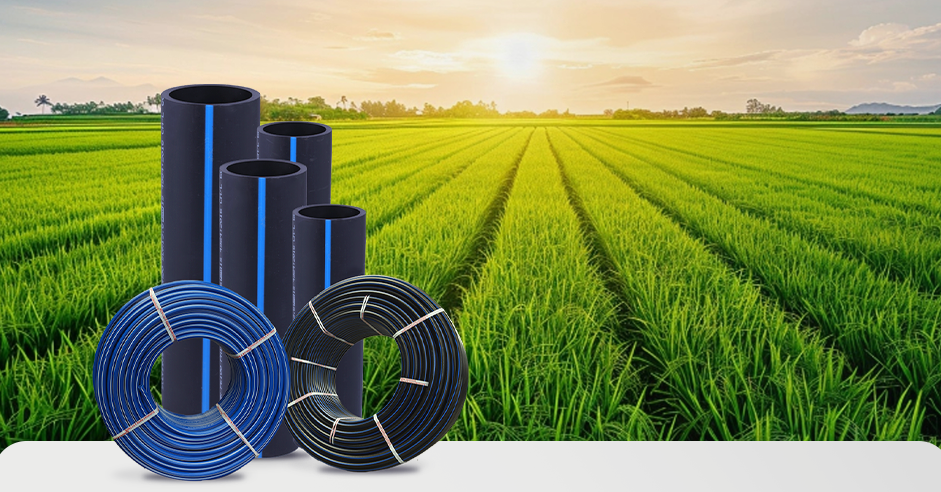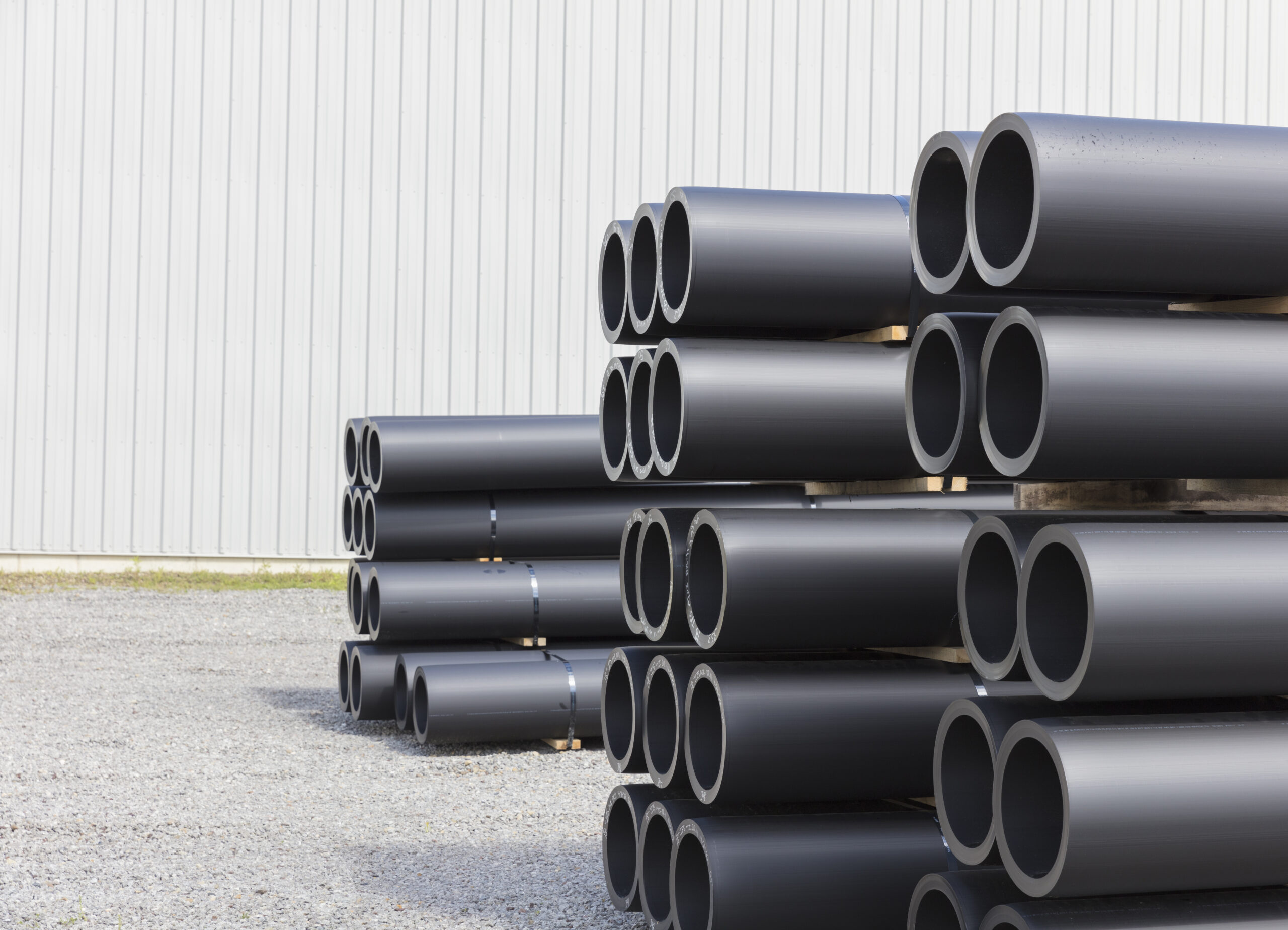Discover the Manufacturing Process Behind High-Quality HDPE Pipe and Its Applications
The manufacturing process of high-grade HDPE pipelines is detailed and systematic. It starts with the choice of raw materials that boost performance. Following this, ethylene goes through polymerization to create material, which is after that shaped through extrusion. Quality assurance is paramount, guaranteeing that the final item satisfies stringent standards. The journey of HDPE pipelines doesn't finish with manufacturing. Their applications across various sectors expose a broader importance worth taking a look at.
Comprehending HDPE: Features and Advantages

High-density polyethylene (HDPE) is a flexible thermoplastic recognized for its toughness and resistance to numerous ecological aspects. This material displays exceptional tensile toughness, making it suitable for demanding applications. Its low-density structure adds to a light-weight product, promoting ease of dealing with and setup. HDPE additionally showcases amazing resistance to chemicals, which lessens degradation when revealed to harsh compounds.
The product's reduced moisture absorption better enhances its durability, making it excellent for usage in pipelines and storage space containers. Additionally, HDPE is resistant to ultraviolet (UV) radiation, making sure that products preserve their integrity also when revealed to sunshine. Its versatility enables for the production of detailed shapes without jeopardizing toughness. The environment-friendly nature of HDPE, usually acquired from recycled products, contributes to its charm, promoting sustainable practices in production. Overall, these residential properties and benefits make HDPE a recommended choice for numerous commercial and customer applications.
Raw Product Option for HDPE Manufacturing
The choice of basic materials for HDPE manufacturing is necessary to validate the end product meets the wanted requirements and top quality standards. High-density polyethylene (HDPE) is mainly created from polymerized ethylene, stemmed from fossil fuels such as natural gas or petroleum. The high quality of these feedstocks substantially affects the mechanical and thermal residential or commercial properties of the final HDPE.
Ingredients additionally play a significant duty in improving HDPE's performance, including antioxidants, UV stabilizers, and colorants, which boost durability and resistance to ecological elements. The choice procedure should consider not just the chemical composition of the raw products however likewise their handling features to assure reliable production.
Additionally, the sourcing of resources need to prioritize sustainability and compliance with environmental guidelines, as responsible techniques are important in today's market. Eventually, mindful resources choice lays the structure for creating high-quality HDPE pipes appropriate for diverse applications.
The Extrusion Process: Forming HDPE Pipe
The extrusion process plays an essential function fit HDPE pipes, beginning with meticulous material prep work techniques that ensure optimal circulation and consistency. Similarly important is the layout of the die, which straight affects the last dimensions and surface high quality of the pipeline. With each other, these elements contribute greatly to the effectiveness and high quality of HDPE pipeline manufacturing.
Product Preparation Techniques
Effective manufacturing of HDPE pipes starts with careful product prep work techniques, especially the extrusion procedure. Throughout this stage, high-density polyethylene resin is very first dried to get rid of dampness, ensuring suitable circulation qualities. The material is after that fed right into the extruder, where it undertakes home heating and melting, changing into a viscous state. This heating procedure is thoroughly controlled to preserve the product's stability and performance. The molten HDPE is forced via a die, shaping it right into a continual pipeline kind. Correct temperature level monitoring throughout extrusion is vital, as it directly influences the material's properties and the last product high quality. Once shaped, the HDPE pipeline is cooled and reduced to defined lengths, ready for subsequent handling and applications.
Die Layout Relevance
Accuracy in die style plays a necessary function in the extrusion procedure of HDPE pipelines. The die serves as the last shaping tool, directly influencing the pipeline's measurements, wall density, and surface finish. A well-designed die warranties consistent material circulation, lowering flaws such as irregularities and weak places. The geometry of the die have to be enhanced to suit the certain homes of HDPE, including its viscosity and thermal actions during extrusion. Furthermore, the cooling rate of the product as it travels through the die can markedly affect the pipeline's architectural integrity. Spending in sophisticated die technology is crucial for producers aiming to produce high-grade HDPE pipes that satisfy sector criteria and consumer assumptions.
Quality Assurance Actions in HDPE Manufacturing
Although various variables influence the quality of HDPE pipe production, efficient quality assurance actions are crucial to guarantee uniformity and dependability in the final item. Key quality assurance techniques consist of strenuous product inspection, validating that the raw polyethylene meets established criteria for pureness and thickness. Throughout the extrusion process, parameters such as temperature level, stress, and cooling time are closely checked to maintain dimensional accuracy and architectural integrity
On top of that, post-production testing is essential; suppliers frequently perform hydrostatic tests to examine the pipeline's toughness and resistance to pressure. Visual inspections for surface area problems additionally enhance top quality assurance. Certification from pertinent requirements companies, like ASTM or ISO, supplies an extra layer of integrity. By applying these extensive quality assurance actions, makers can decrease issues, enhance performance, and guarantee that the HDPE pipes satisfy the specific requirements of numerous applications, eventually leading to client satisfaction and count on the item.
Applications of HDPE Pipe Throughout Industries
HDPE pipes are used across numerous industries due to their durability and flexibility. In water circulation systems, they guarantee reliable shipment, while in wastewater monitoring, they provide reliable options for waste transportation. Furthermore, farming watering networks benefit from HDPE's resistance to deterioration and flexibility, making it an excellent choice for modern-day farming practices.

Water Circulation Equipments
A substantial variety of markets depend on high-density polyethylene (HDPE) pipelines for reliable water circulation systems. Known for their resilience and resistance to corrosion, HDPE pipelines are extensively made use of in local water system networks, farming irrigation, and commercial applications. Their lightweight nature promotes very easy handling and setup, decreasing labor prices and time. In addition, HDPE pipes can accommodate numerous stress degrees, making them appropriate for both low and high-pressure systems. hdpe pipe fittings Midland TX. The flexibility of the product enables seamless integration right into existing infrastructure, decreasing the requirement for considerable excavation. Additionally, HDPE's resistance to chemical leaching warranties that the water provided continues to be safe and tidy, making it an excellent option for keeping the quality of safe and clean water across various fields
Wastewater Management Solutions
Effective water distribution systems also lead the way for ingenious wastewater management remedies, where high-density polyethylene (HDPE) pipelines play a considerable duty. Prominent for their durability and resistance to rust, HDPE pipelines are excellent for transferring wastewater in various settings. Their adaptability permits for simple setup in complicated settings, minimizing the demand for considerable excavation. Furthermore, HDPE's smooth indoor surface decreases friction, enhancing circulation rates and performance. These pipes are also immune to chemical leaching, making certain that pollutants do not endanger the surrounding atmosphere. Industries, communities, and treatment centers progressively rely upon HDPE pipelines for their integrity and durability, making them a recommended choice for modern wastewater administration systems. This adaptability emphasizes read more the crucial significance of HDPE pipes throughout countless applications.
Agricultural Irrigation Networks
Agricultural watering networks benefit significantly from using high-density polyethylene (HDPE) pipelines, which provide reliable and reputable water distribution to plants. HDPE pipes are lightweight, making them easy to carry and install, while their flexibility enables various arrangements in diverse surfaces. These pipelines show excellent resistance to deterioration, chemicals, and UV radiation, guaranteeing sturdiness in harsh farming environments. Furthermore, their smooth interior surface area minimizes friction loss, optimizing water flow and minimizing power prices linked with pumping. The durability of HDPE pipelines, typically surpassing half a century, adds to reduce upkeep and substitute expenditures. Farmers significantly depend on HDPE pipes to enhance watering efficiency and promote sustainable agricultural methods, eventually leading to enhanced crop returns and source preservation.

Future Fads in HDPE Pipe Modern Technology
As the demand for lasting and reliable infrastructure grows, improvements in HDPE pipeline modern technology are poised to change numerous markets. Arising patterns consist of the combination of smart technologies, such as sensing units and IoT capabilities, which promote real-time tracking of pipeline conditions, minimizing upkeep costs and protecting against leaks. In addition, the development of advanced manufacturing methods, such as 3D printing, is making it possible for the manufacturing of facility, personalized pipeline designs that cater to specific job demands.
In addition, the emphasis on recycling and round economy techniques is driving the advancement of HDPE pipelines made from recycled products, boosting sustainability. Enhanced jointing approaches, such as electro-fusion and mechanical installations, are likewise boosting installation effectiveness and integrity. The growing focus on ecological guidelines is pressing makers to embrace greener manufacturing processes, making sure that HDPE pipes not only fulfill market standards but also foster an even more sustainable future for framework development.
Regularly Asked Questions
How Does HDPE Compare to Various Other Plastic Materials?
HDPE outperforms numerous various other plastic products relating to sturdiness, chemical resistance, and versatility. Its reduced thickness and high tensile stamina make it excellent for numerous applications, typically surpassing choices in both efficiency and longevity.
What Are the Environmental Impacts of HDPE Manufacturing?
The ecological impacts of HDPE production include greenhouse gas discharges, power consumption, and prospective contamination from producing processes. In addition, improper disposal can result in dirt and water contamination, elevating concerns concerning long-lasting eco-friendly effects.
Can HDPE Water Lines Be Reused?
Yes, HDPE pipes can be recycled. Lots of centers approve used HDPE for processing, changing it right into new items. This reusing adds to sustainability initiatives, lowering plastic waste while conserving sources and power in the production cycle.
What Is the Life Expectancy of HDPE Pipeline?

Just How Do Temperature Level Variants Influence HDPE Pipeline Performance?
Temperature variants substantially influence HDPE pipe performance, impacting versatility and toughness. High temperatures can lead to softening, while low temperatures may cause brittleness, ultimately affecting the pipe's longevity and suitability for numerous applications in diverse settings.